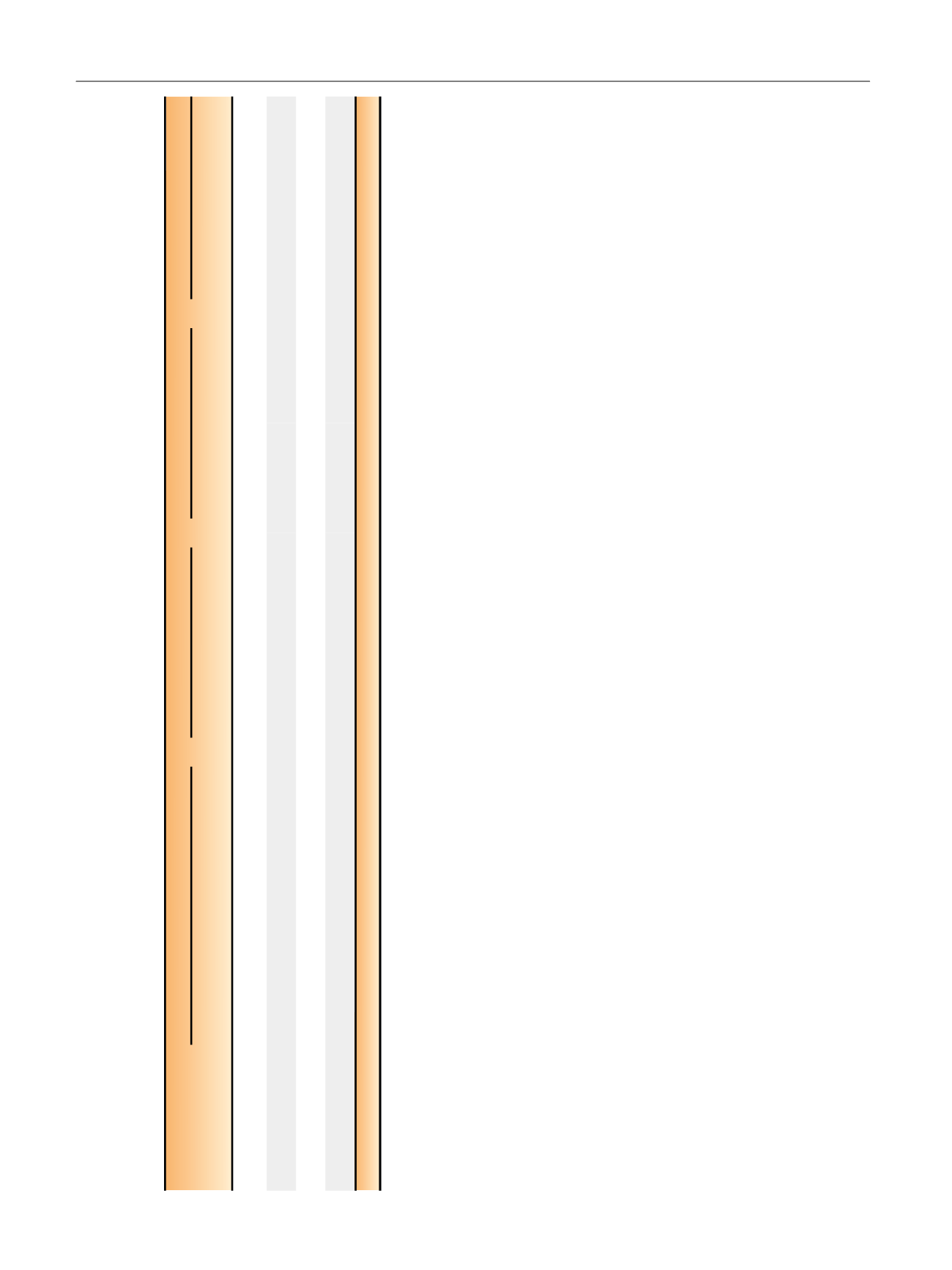

manufactured by Roche NimbleGen. SeqCap EZ Library SR User’s Guide
(Roche, Pleasanton, CA, USA) was followed for library preparation and
capture of targeted sequences. Paired-end sequencing of 2 150 bp was
performed on an Illumina MiSeq. Twelve individual libraries were
multiplexed for a MiSeq flow cell. The mean sequencing depth of
coverage was 135 overall and was 180 , 208 , and 219 for
ATM
,
BRCA1
, and
BRCA2
, respectively. All the targeted bases in these three
genes were successfully sequenced (
>
20 ) in
>
99% samples. Sanger
sequencing was used to confirm a subset of mutations identified in the
WES and panel sequencing. Among the 19 samples analyzed using both
WES and target panel, the concordance of called pathogenic and likely
pathogenic mutations between the two sequencing methods was 100%.
2.3.
Bioinformatics analysis
Paired-end reads were aligned to the GRCh37 version of the human
genome using Burrows-Wheeler Aligner v0.7 to generate BAM files
[26]. After sorting the BAM files using samtools, polymerase chain
reaction duplicates marked using Picard and realignment around
putative gaps was performed using the Genome Analysis Toolkit version
3.2-2. Variant calling was performed with the Genome Analysis Toolkit
Haplotype caller. ANNOVAR
( http://annovar.openbioinformatics.org/en/ latest )and snpEff were used for annotating variants and for retrieving
information on variants in the population-based studies such as
the 1000 Genomes Project
( www.1000genomes.org), NHLBI-ESP
6500 exomes or Exome Aggregation Consortium
( http://exac. broadinstitute.org/ ), and clinical databases such as the Human Gene
Mutation Database
[27]and ClinVar
[28]. Pathogenicity of variants is
defined based on American College of Medical Genetics and Genomics
criteria
[29]. Specifically, pathogenic and likely pathogenic mutations
are defined as: (1) all protein truncating mutations unless their allele
frequency is 5% or higher in any racial group in population databases or is
reported as benign or likely benign in the ClinVar, and (2) nonsynon-
ymous changes if their allele frequency is less than 5% and reported as
pathogenic and likely pathogenic mutations in the ClinVar, (3) inframe-
shift mutations affecting more than three amino acids are considered
pathogenic mutations.
2.4.
Statistical analysis
The frequency of pathogenic and likely pathogenic mutations was
estimated for each gene in lethal cases and indolent cases and analyzed
using the Fisher’s exact test and logistic regression analysis. Time to
death between mutation carriers and noncarriers was compared using
Kaplan-Meier survival and Cox regression analysis adjusting for age,
race, PSA level, and Gleason score at the time of diagnosis. Proportional
hazard assumption was tested using log-log test and was met. Hazard
ratio and its 95% confidence interval were calculated to estimate
mortality risk. A type I error of 0.05 (two-sided) was used to define
statistical significance.
3.
Results
A total of 313 men who died from PCa and 486 low risk
localized PCa patients were included in the study. Among
them, 613, 119, and 67 were European American, African
American, and Chinese men, respectively. Germline patho-
genic and likely pathogenic mutations in
ATM
and
BRCA1/2
detected in these study participants are described in
Figure 1and Supplementary Table 1. The frequency of
mutations was 6.07% in lethal PCa patients, significantly
higher than that observed in localized PCa patients (1.44%),
p
= 0.0007
( Table 2 ). Specifically, for
BRCA2
, mutations were
Table 1 – Characteristics of study population
All
European American
African American
Chinese
Lethal
(
n
= 313)
Localized
(
n
= 486)
p
value
Lethal
(
n
= 261)
Localized
(
n
= 352)
Lethal
(
n
= 30)
Localized
(
n
= 89)
Lethal
(
n
= 22)
Localized
(
n
= 45)
Age at diagnosis, yr
(median, quartiles)
62.0 (57.0–68.0)
65.0 (63.0–68.0)
8.7 10
–5
62.0 (57.0–68.0)
65.0 (64.0–67.0)
63.0 (54.8–68.0)
57.0 (53.0–60.0)
68.5 (61.5–71.0)
71.0 (67.0–75.0)
PSA, ng/ml
(median, quartiles)
13.1 (6.4–62.1)
5.3 (3.8–7.7)
6.1 10
–44
11.3 (6.0–43.8)
4.9 (3.7–7.0)
11.9 (7.2–85.0)
5.1 (3.5–6.6)
100 (22.5–306.6)
10.6 (8.2–14.1)
Proportion of Gleason
Score 7 PCa (%)
222/276 (80.43)
22/485 (4.53)
2.8 10
–14
128/228 (56.14)
22/351 (6.26)
21/27 (77.78)
0/89 (0)
19/21 (90.48)
0/45 (0)
Age at death, yr
(median, quartiles)
72.0 (64.0–78.0)
—
—
72.0 (64.0–78.0)
—
71.5 (63.2–76.5)
—
71.0 (64.0–73.3)
—
PCa = prostate cancer; PSA = prostate-specific antigen.
E U R O P E A N U R O L O G Y 7 1 ( 2 0 1 7 ) 7 4 0 – 7 4 7
742
















